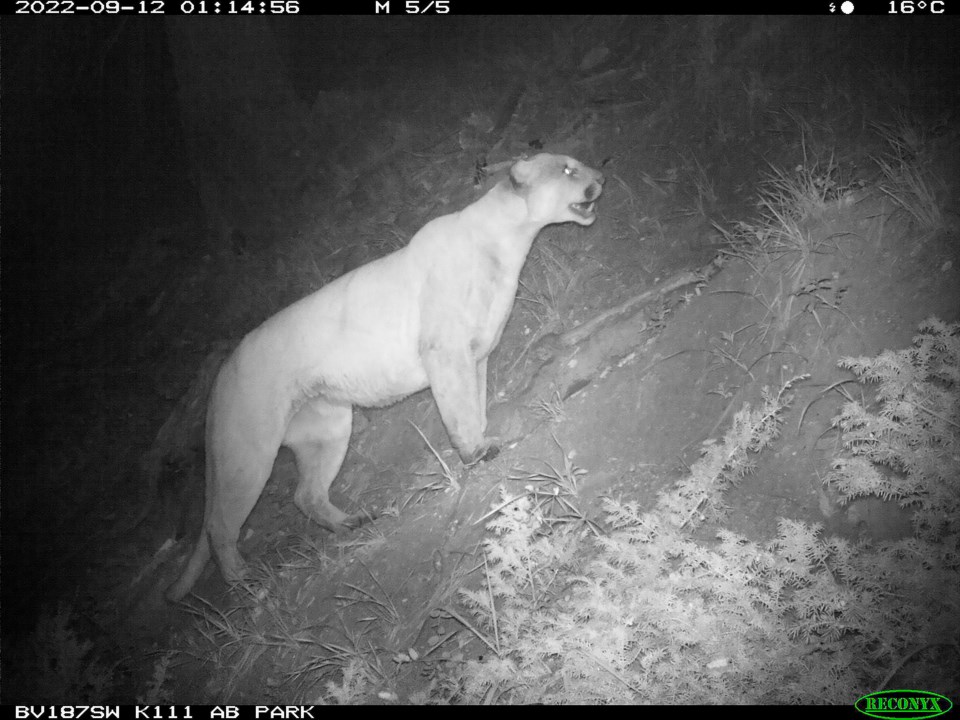MD OF BIGHORN – Due to minimal information on how to safely avoid and manage cougar-human encounters, and the fact Alberta manages cougars through hunting, the Cougar Coexistence Project is looking for other effective solutions and hopes the MD of Bighorn can help.
The Exposed Wildlife Conservancy (EWC) uses trail cameras that will track the movement and behaviour of cougars in a non-invasive way. The program has been piloted in the Village of Waiparous, where six trail cameras were set up.
“Through our conversations already, we know that cougars don’t know our human boundaries,” said Jessica Barham, operations manager for EWC. “We feel like the next natural step is to partner with the MD of Bighorn so we can have access to more community members, install more trail cameras and make a bigger impact in this project.”
The long-term project goals for the organization are to support communities coexisting with cougars, provide educational opportunities and reduce cougar-human conflicts. And while council did not make a decision on a potential partnership, it could return at a later date.
These goals would be achieved through information signage, educational programs, outreach materials and public engagement.
The cost of the trail cameras, signage and outreach efforts are covered by the Cougar Coexistence Project, and it would provide the MD of Bighorn with a proactive approach to cougar management.
As a partner in the program, the MD would advise the organization on the unique needs of the community, create opportunities for community feedback and grant permission and access to install trail cameras in the area.
Coun. Rick Tuza asked if the pictures would be available online to help see the progression of the project.
Barham said the research database would contain a compilation of pictures, information and video, which would be updated as quickly as possible.
“If you like, we can set up a system where we can send them directly to you, or we can have a place on your website that you can update regularly,” Barham said. “We also look to share this on our social media platforms.”
A question of privacy was brought up by Reeve Lisa Rosvold, and whether or not pictures of people would be uploaded online.
“We expect to see some people on the footage,” Barham said. “If it is just a person, we won’t be posting that or sharing it. If it is an actual interaction between a person and wildlife, and we can’t find them to get their information, we will blur their identity.”
Barham added if there was a specific area with cougar activity, the project would welcome suggestions about where to put cameras.
Barham noted the organization does not have an agreement with the Alberta government, so it is unable to access those wildlife cameras. However, people with personal trail cameras would be able to reach out to the group.
“We don’t have a partnership with the government so we can’t access their footage, but we can put up a camera in a similar area,” Barham said. “We welcome our community’s footage, their cameras and their experiences.”




